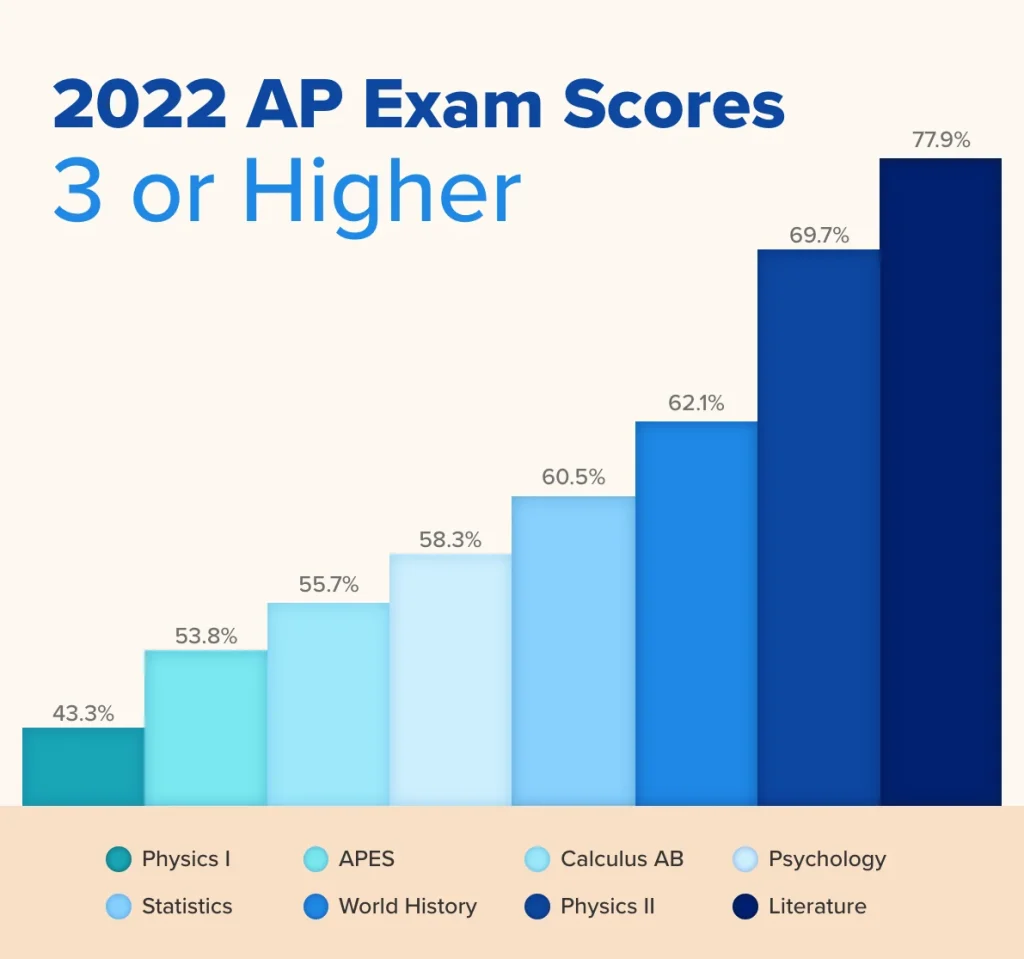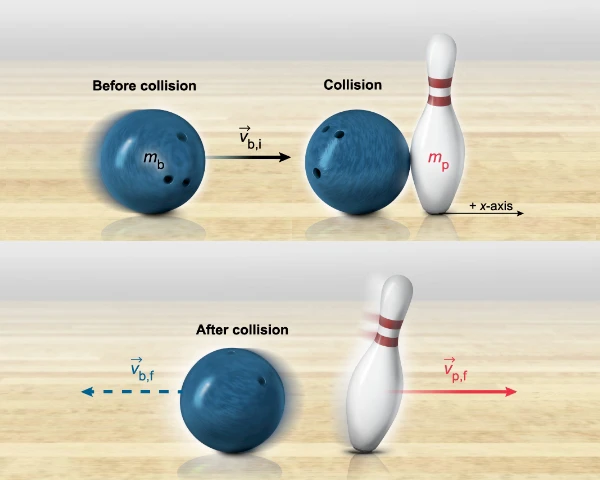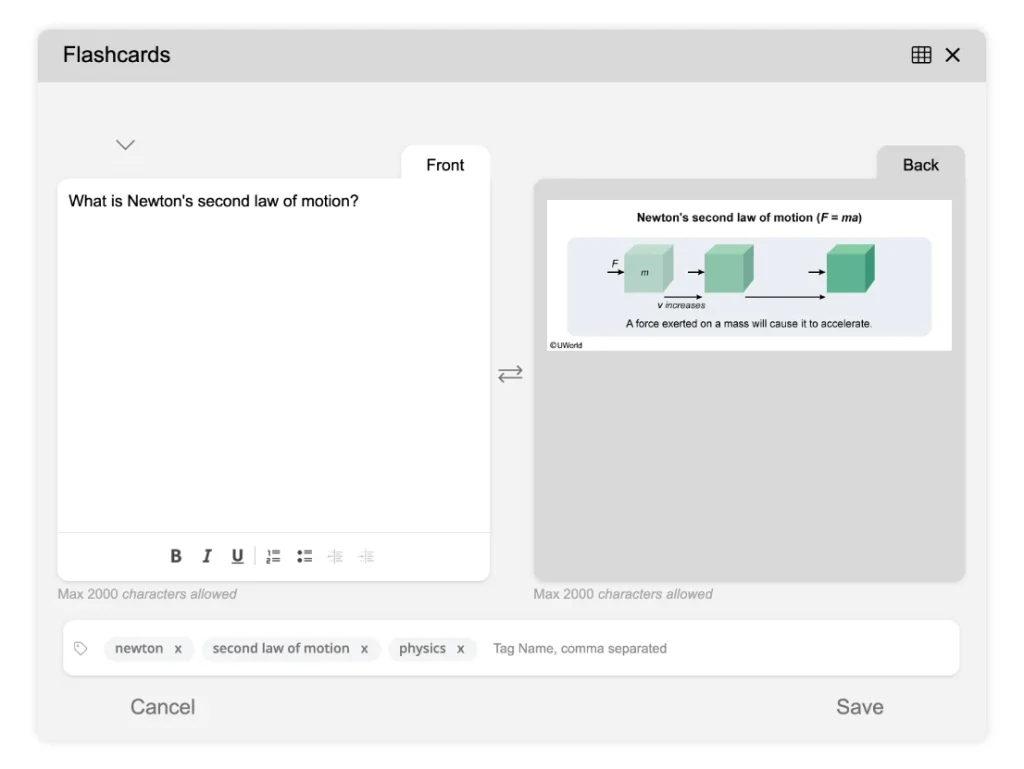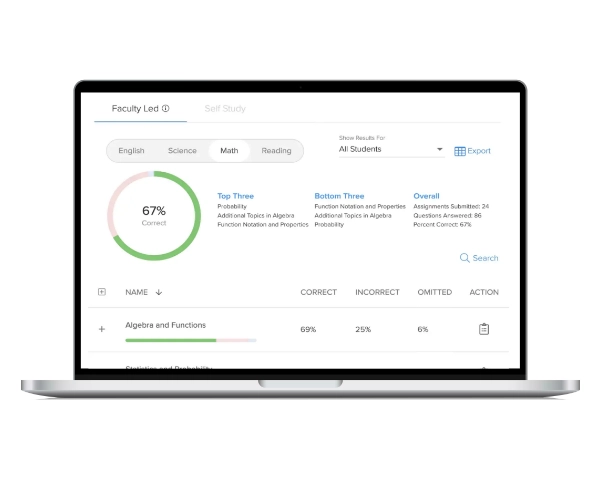During one particular late 1960s field trip to the Hayden Planetarium, a nine year old boy discovered his love of science, which would eventually lead to his becoming one of the most famous astrophysicists of the 20th and 21st centuries. Unsurprisingly, Neil deGrasse Tyson did not make a name for himself as a reputable scientist overnight. For nearly thirty years, Tyson studied hard and took the necessary steps to prepare for a career in astrophysics, from attending the Bronx High School of Science to becoming the director of the very planetarium that sparked his scientific ambitions.
In a similar fashion, AP® Physics teachers spend the length of their courses preparing their students for their college readiness ambitions, as well as for their summative exams. In the weeks leading up to the summative tests, these educators must especially take care to spiral through every course learning standard with a rigorous AP Physics test review and practice questions. Teachers take great care with their test AP Physics exam preparation plans because they know that these assessments are far from easy. In fact, in 2022, just 43.3% of students who took the AP Physics 1 exam passed with a score of 3 or higher1 needed to earn college credit. A high-quality AP Physics 1 final exam review could have possibly increased that success rate.

Student Score Distributions on AP exams (2022)
Physics teachers put in significant effort into AP Physics exam prep that maximizes their students’ chances of success on the test. To simplify this process, we offer five quick tips for an AP Physics last-minute review that can be seamlessly integrated into any content spiral. These tips serve as valuable resources to support teachers in providing effective and efficient exam readiness strategies for their students.
Tip 1: Break Curriculum into Smaller, Doable Parts
Teachers often use a technique called “chunking” to help students prepare for exams. This method involves revisiting key concepts in a cyclical manner during the weeks leading up to the tests, reinforcing students’ retention of the material. However, given the limited time available for last-minute AP Physics test review, it becomes challenging to cover the entire course content comprehensively. Nonetheless, research suggests that breaking down the study material into smaller, more manageable sections, commonly referred to as “bite-sized” chunks, is the most effective approach to preparing for a comprehensive assessment within a constrained time frame. Adopting this “chunking” strategy enables students to study efficiently for summative tests.
A study published in Educational Psychology Review2 found that breaking down information into smaller, more manageable pieces can enhance genuine student learning. The research demonstrated that chunking the material increased students’ confidence as they advanced through the content. In the context of AP Physics, teachers can adopt a targeted approach where they don’t have to cover an entire unit or a significant foundational concept in a single class session. Instead, they can sequentially focus on smaller portions of the unit or concept, enabling students to review all the essential content required for the upcoming test. This strategic approach facilitates effective learning and preparation.

AP Physics teachers can employ an effective strategy called “interleaving” to help their students prepare for exams. This approach involves reviewing multiple interconnected topics concurrently. Research suggests that when teachers present seemingly unrelated topics together, students gain a deeper understanding of their unique characteristics and enhance their ability to apply their knowledge. By combining the chunking and interleaving techniques, AP Physics teachers can greatly improve students’ preparedness and boost their confidence on exam day. This holistic approach optimizes learning outcomes and ensures students are well-equipped to showcase their understanding of the subject matter.
Our choice for an AP Physics test review guide: UWorld
Our choice for a review guide resource for teachers planning their AP Physics exam prep is UWorld’s AP Physics Study Guide: Tips, Strategies, and Common Mistakes to Avoid.
Why We Chose It:
- Comprehensive Topic Coverage: The review guide covers the most difficult concepts in AP Physics 1, ensuring teachers can focus on key areas that students often struggle with during last-minute preparation.
- Interactive Format: The guide provides clickable links for each topic, allowing teachers to easily navigate and access detailed explanations of challenging concepts. This interactive format facilitates in-depth discussions and review sessions with students.
- Step-by-Step Organization: The guide is ordered unit by unit, providing a structured approach for teachers to follow during AP Physics last-minute review. This organization promotes a systematic and organized exam preparation process.
- Focus on Common Mistakes: The guide highlights common misconceptions and mistakes that students make, enabling teachers to address these issues proactively. By emphasizing these pitfalls, teachers can help students avoid errors and reinforce their understanding of the subject matter.

Tip 2: Practice with Released Exams
Giving students chances to practice with previous AP Physics exams is a simple way for teachers to help them get ready for the test. It’s very likely that this practice will lead to better scores for students. Research from the University of Nebraska-Lincoln3 shows that when students work on realistic test questions, like the ones in released exams, their scores improve by an average of 15%. On the other hand, studying with different questions only resulted in a smaller score improvement of 6%.
Our choice for released exam questions: The College Board secure released exams
The College Board® is the go-to resource for obtaining released AP exams, making it our preferred choice. While students don’t have direct access to these exams, AP teachers can utilize them for practice and review purposes. These exams can be conveniently accessed through AP Classroom.4 For detailed information about the released exams, AP Physics instructors can refer to the AP Classroom User Guides. It’s a valuable tool to enhance exam preparation and support effective teaching practices.
Why We Chose It:
- These questions are from actual exams in previous years, providing a reliable and authentic source.
- They closely match the current structure and format of the AP Physics exam, including the number, type, and duration of questions.
- A wide variety of question types and topics are covered in the previous exam questions.
- The questions are designed to encompass different levels of difficulty, ranging from easy to challenging.
Tip 3: Multiple-Choice Practice Makes Perfect
Engaging in regular practice of multiple-choice questions is a vital aspect of preparing for the AP Physics test. AP Physics teachers should encourage their students to tackle a minimum of two multiple-choice questions each day while revisiting key concepts. Using multiple-choice exit tickets or bellringers can serve as effective tools to help students review important ideas that may appear on the test. By incorporating this routine, students can enhance their familiarity with the question format and reinforce their understanding of essential topics.
Regularly practicing multiple-choice questions helps students develop essential skills such as annotating, utilizing context clues, and eliminating obviously incorrect options. These habits improve both their efficiency and accuracy in test-taking. By engaging in multiple-choice practice, students can also enhance their time management skills and become more comfortable with the test’s pace. This consistent practice cultivates a familiarity with the question format, enabling students to approach the AP exam with confidence and perform at their best.
Our choice for multiple-choice practice: UWorld
Our top recommendation for a comprehensive multiple-choice practice resource is UWorld’s Learning Tools for AP Courses. It’s an excellent tool to incorporate into your last-minute AP Physics exam preparation, providing a focused practice with multiple-choice questions.
UWorld stands out with its exceptional explanations accompanying each question. The platform utilizes adaptive learning technology, which customizes the practice experience for students based on their individual understanding. This personalized approach allows students to review and reinforce their knowledge throughout the year, identify their strengths and areas for improvement, and effectively build their skills in preparation for the exam.
As you approach the final weeks of AP Physics test preparation, UWorld offers a convenient and efficient way to quickly review key concepts and practice multiple-choice questions. Its user-friendly interface and comprehensive question bank make it an invaluable resource for sharpening your understanding and boosting your confidence before the exam.
Why We Chose It:
- Students receive immediate feedback along with explanations for correct and incorrect responses, facilitating a deeper understanding of fundamental physics concepts through error analysis.
- The resource offers an extensive collection of multiple-choice practice questions, covering all topics included in the AP Physics exam, ensuring comprehensive coverage of the subject matter.
- Timed practice questions help students acclimate to the time constraints of the AP Physics exam, allowing them to develop effective time management skills and assisting teachers in assessing their students’ ability to complete the exam within the allotted time.
- Teachers have the flexibility to select specific topics and question types for focused practice sessions, enabling them to target areas where students require additional support. This customizable approach ensures that students receive tailored assistance and are well-prepared for the AP Physics final exam.

Tip 4: Greater Understanding with Justifications – Studying for FRQs
Understanding the significance of deep comprehension is a notable difference in modern education compared to previous decades. To cultivate genuine understanding in students, educators need to move beyond merely providing answers and instead encourage them to explore the reasoning behind concepts. This approach holds particular importance when preparing for the AP Physics test. A study published in the Journal of Computer-Assisted Learning5 demonstrated that students who were prompted to justify their answers demonstrated a stronger understanding of the material compared to those who were only asked to provide responses. By incorporating written explanations into the learning process, teachers can enhance students’ comprehension and retention of the subject matter.
Encouraging students to justify their answers in writing also prepares them for free-response questions. In addition, offering online examples of exemplary free-response question (FRQ) responses can greatly assist students in performing well on the AP Physics exam. By examining sample questions, teachers and students can collaborate to generate ideas and craft effective FRQ answers.
Our choice for additional FRQ practice: CrackAP
CrackAP’s AP Physics Free-Response Practice Tests provide a great resource for AP Physics FRQs in addition to the questions released by the College Board.
Why We Chose It:
- Extensive collection: The resource offers a wide range of FRQ practice questions, ensuring comprehensive coverage of AP Physics topics.
- Last-minute preparation: Perfect for teachers planning a quick review, the resource allows students to practice and reinforce key concepts efficiently.
- Realistic exam simulation: The practice questions closely mirror the format and style of AP Physics FRQs, preparing students for the actual exam.
- Convenient access: With downloadable files available from the provided link, teachers can easily integrate the resource into their lesson plans for immediate use.
Tip 5: Repetition with Flashcards
Using flashcards is an effective method to reinforce information and key terms in a course. Students actively engage in learning and improve their memory retention through active recall. According to the Central Penn College Learning Center,6 flashcards facilitate active recall, stimulating memory and forming lasting connections with the material.
When preparing students for the AP Physics final exam, teachers need to cover a wide range of scientific concepts and essential vocabulary. Incorporating flashcard-based activities with a spiral approach keeps students engaged and motivated. Flashcards can be utilized individually or in group study sessions. Regular use of flashcards in AP Physics classes enhances students’ understanding and retention of important course content.
Our recommendation for AP Physics flashcards: UWorld
We highly recommend the UWorld flashcards feature as an excellent resource for AP Physics. It offers students a flexible and convenient way to enhance their AP Physics knowledge. With the UWorld flashcards, students can create customized decks and focus on specific topics of their choice. It’s a valuable tool for those aiming to excel in the AP Physics test, thanks to its adaptable nature and user-friendly interface.

Teachers can also assign students various review activities involving paper flashcards. Here are some recommendations for utilizing them effectively in AP Physics exam preparation.
Prioritize Comprehension over Memorization
Instead of solely memorizing flashcard information, focus on connecting it with other concepts to enhance your overall understanding of the material.
Create Personalized Flashcard Decks
Crafting your own flashcards compels you to engage with the content and express it in your own words, aiding in memory retention.
Combine Words and Pictures
Incorporating both textual and visual representations on your flashcards helps establish connections and improves retention and recall.
Infuse Fun into Review Activities
Introduce games or enjoyable exercises while using flashcards to make the review process more engaging. This approach can enhance retention and cultivate a positive learning mindset.
Instead of solely memorizing flashcard information, focus on connecting it with other concepts to enhance your overall understanding of the material.
Crafting your own flashcards compels you to engage with the content and express it in your own words, aiding in memory retention.
Incorporating both textual and visual representations on your flashcards helps establish connections and improves retention and recall.
Introduce games or enjoyable exercises while using flashcards to make the review process more engaging. This approach can enhance retention and cultivate a positive learning mindset.
Bonus Tip: Prepare Students with Test Day Reminders
This last suggestion might sound more like general advice for test day than a last-minute tip specifically for AP Physics. However, it’s crucial for teachers to review what students should do and bring on exam day. It’s a common occurrence for students to forget to turn off their phones, bring a pencil, or even show up late for their AP exams. Surprisingly, a study conducted by the College Board7 revealed that students who arrived early and had all the necessary supplies for their AP exams scored an average of 20 points higher compared to those who were late or forgot their materials. So, make sure to discuss a checklist of preparations your students should complete for the AP Physics exam and remind them of the essential items they need to bring along.
Checklist of Reminders for AP Physics Students
The Day Before the AP Physics Exam:
Make sure to gather and organize all the necessary test materials ahead of time
Avoid over studying for the exam to prevent burnout
Fuel yourself with a balanced meal and stay hydrated throughout the day
Take breaks to relax and engage in stress-relieving activities
Brush up on effective test-taking strategies
Double-check the exam’s location and start time to avoid any surprises
Set multiple alarms to ensure you wake up on time and ready
Pack your bag with a valid photo ID and any other required items
Plan your route to the test location in advance for a smooth journey
The Day of the AP Physics Exam:
Remember to bring a pen with dark blue or black ink
Don’t forget to bring a valid photo ID issued by the government
Bring your AP student packet, which includes an AP number label and a demographic sheet
Remember to bring your exam e-ticket or registration confirmation
Consider bringing a watch to help you keep track of the time
It’s a good idea to bring a snack and some water. Remember, you can only have them during breaks and they must be kept on the floor throughout the test.
Key Takeaways
For teachers aiming to provide top-notch content review and AP Physics test preparation, the last few weeks leading up to the exam are undeniably vital. By implementing the five suggestions outlined in this article, AP Physics educators can effectively assist their students in feeling well-prepared and self-assured when facing their exams.
Learn more about how we support AP educators who strive to make a difference in the lives of their students with our Learning Tools for AP Courses.

References
- Student Score Distributions* AP exams – May 2022. (n.d.). Retrieved March 22, 2023, from https://apcentral.collegeboard.org/media/pdf/ap-score-distributions-by-subject-2022.pdf
- Rohrer, D. (2012, July 28). Interleaving helps students distinguish among similar concepts – educational psychology review. SpringerLink. Retrieved March 21, 2023, from https://link.springer.com/article/10.1007/s10648-012-9201-3
- The effects of age and professional expertise on … – Wiley Online Library. (n.d.). Retrieved March 22, 2023, from https://onlinelibrary.wiley.com/doi/abs/10.1002/acp.1467
- Formative assessment. AP For All. (n.d.). Retrieved March 29, 2023, from https://apforallnyc.com/formative-assessment/
- Let me explain! the effects of writing and … – Wiley Online Library. (n.d.). Retrieved March 22, 2023, from https://onlinelibrary.wiley.com/doi/10.1111/jcal.12608
- Libguides: Learning Center – Study Skills: Flashcards. Flashcards – Learning Center – Study Skills – LibGuides at Central Penn College. (n.d.). Retrieved March 22, 2023, from https://guides.centralpenn.edu/c.php?g=695569&p=4999857
- Source: College Board. (2021). AP Exam Score Distributions. Retrieved from https://reports.collegeboard.org/media/pdf/2021-ap-student-score-distributions_1.pdf




